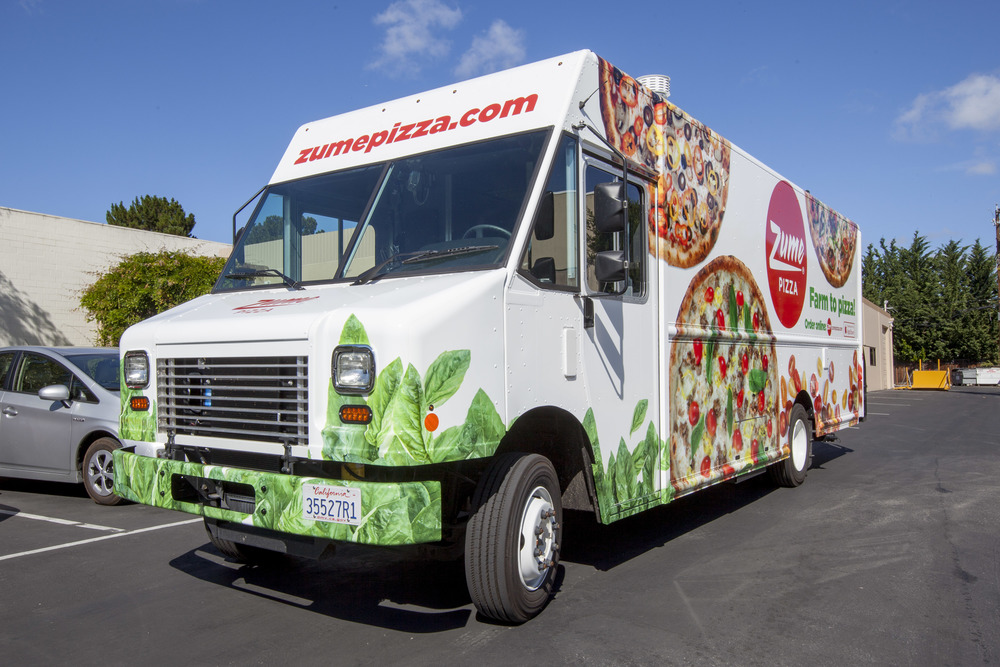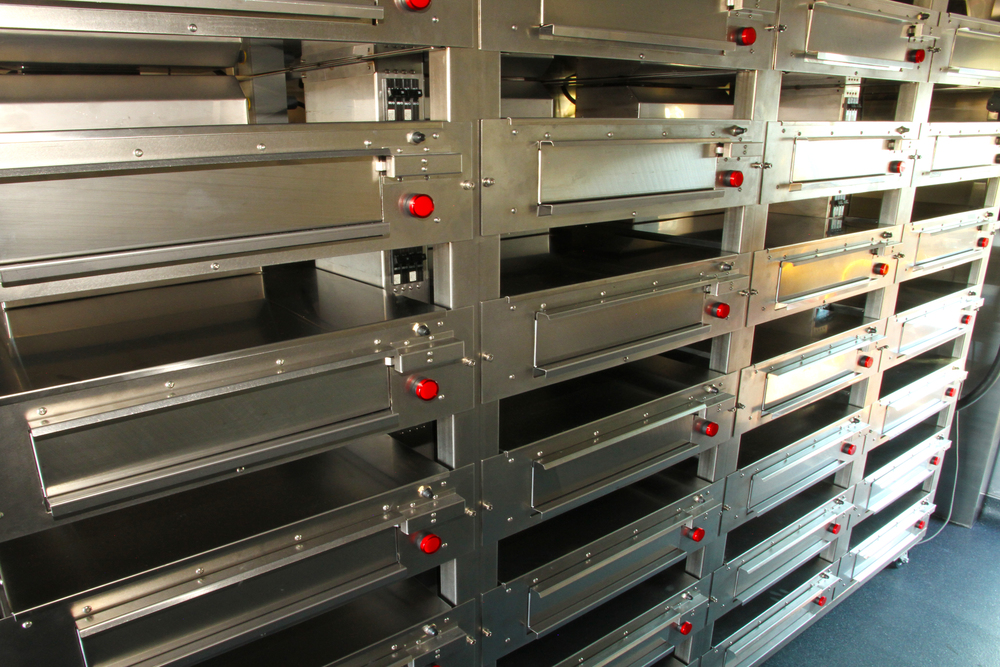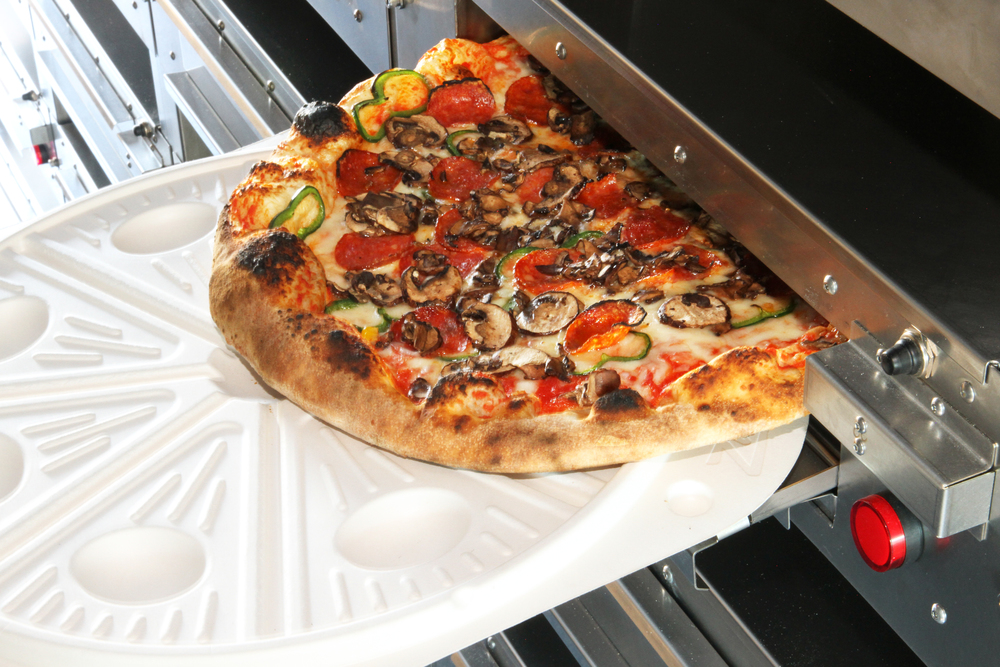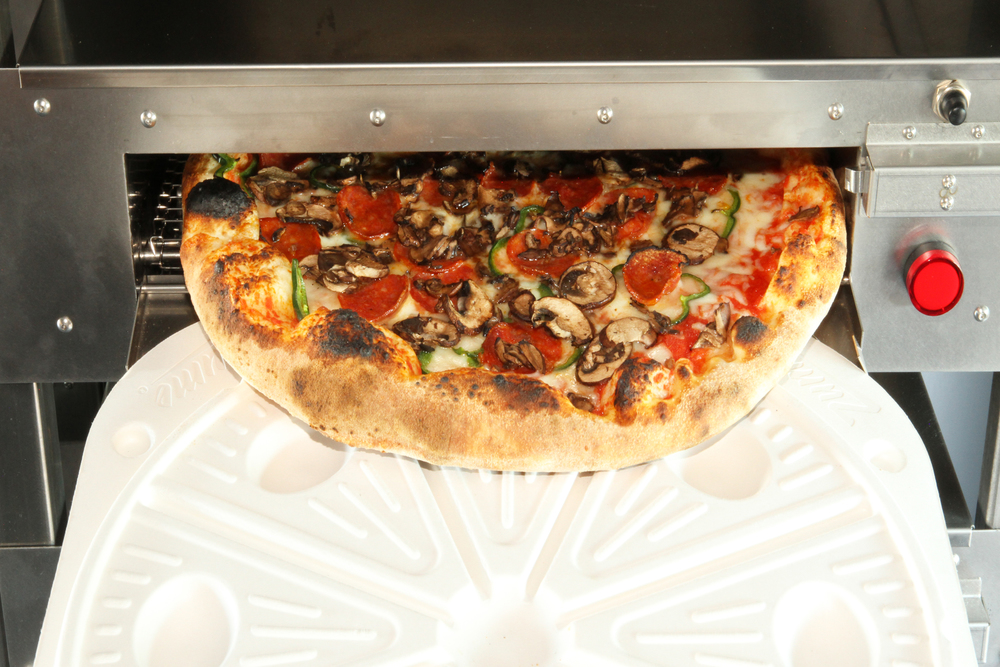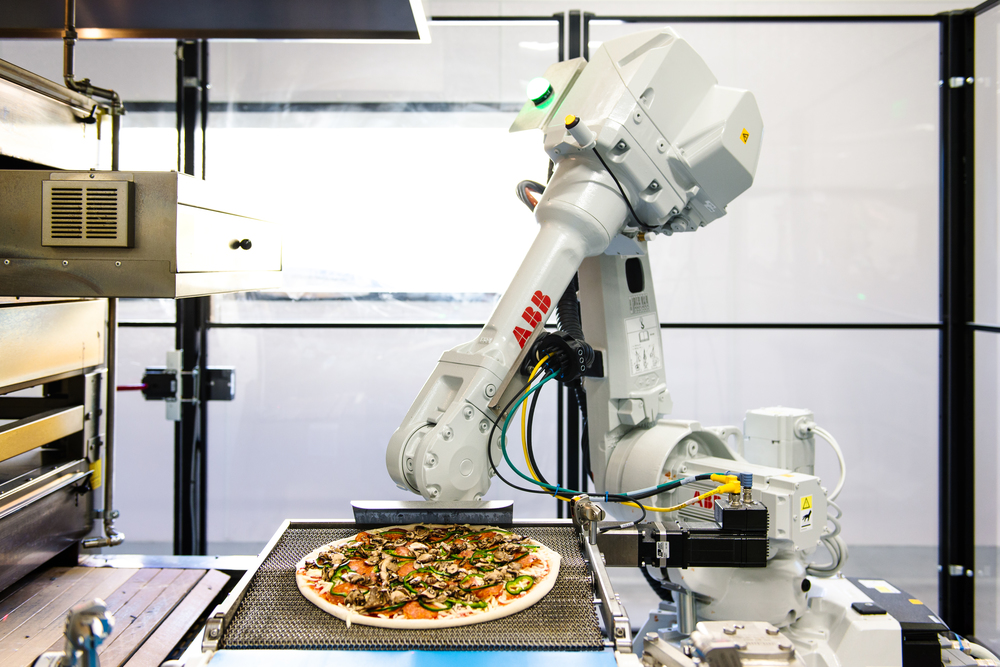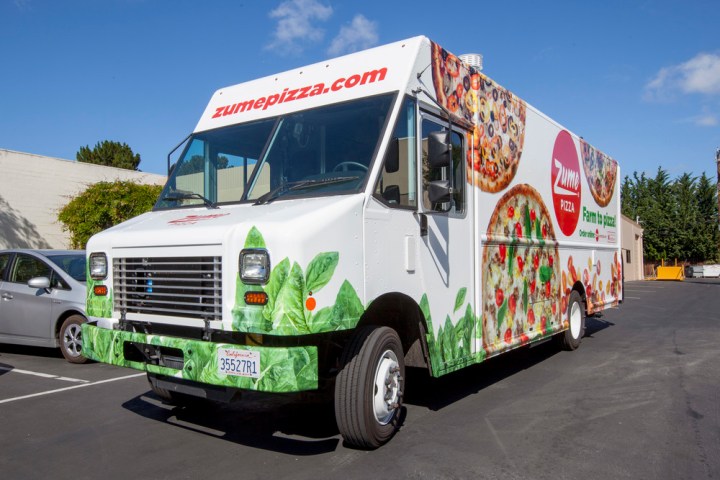
Ever wondered why delivery food rarely tastes as good as it does fresh out of a restaurant oven? Blame it on “dwell time,” or the interim period food spends overcooking in plastic, cardboard, and takeout containers. “Dwelling can lead to a dramatic decline in quality,” Zume Co-Founder and Co-CEO Julia Collins told Digital Trends. “It’s particularly drastic past the 15-minute mark.”
Zume’s solution is technology — and lots of it. Each BOTW comprises a delivery truck, a single driver equipped with a navigational iPad, and 56 computerized cooking surfaces. Pizzas from Zume’s distribution facility are partially baked — each at between 700 and 800 degrees for precisely 90 seconds, Collins said — before being hoisted into the ovens. From there, machine intelligence takes over: by factoring GPS location and drive time, each oven is able to calibrate to the appropriate delivery distance, switching on only when the pizza which they contain approaches its final destination.
At that crucial juncture, the appropriate oven — or ovens, if the order’s a particularly large one — switch on for exactly three and a half minutes to complete the bake. It then enters a 30-second cool-down period and ejects the finished pie into one of Zume’s proprietary, recyclable Zume Pod takeout containers. The finishing touch: a pneumatic pizza slicer that cuts the pizza into equal pieces.
The adoption of BOTW won’t affect Zume’s commitment to quality, Collins said. The company’s dough recipe, which Collins said contains no stabilizers and oxidizers, will remain the same. So too will Zume’s selection of “healthy,” “locally sourced” ingredients: the startup taps a single farm for the California tomatoes it uses to produce its sugar-free sauce, Collins said, and sources meats free of synthetic nitrites. “It’s a return to traditional pizza making,” she said. “We’re using technology to give people faster, better, more affordable food.”
And the benefits are numerous, Collins said. Drivers won’t be have to compromise safety for quality — BOTW deliveries can be completed out of order. Zume’s geographic delivery radius will be dramatically expanded — BOTW trucks can deliver to customers up to 45 minutes driving distance from Zume’s hub, much farther than the 12-minute distance to which deliveries were previously limited.
Moreover, BOTW vehicles will improve operational efficiency. In a typical franchise arrangement, delivery drivers at slow outposts have no incentive to lend a hand to, say, the bustling pie places downtown, but Zume sidesteps that problem: its back-end system directs BOTW drivers to hubs based on demand. “Dominos has about 53 franchises covering delivery for the [San Francisco] Bay area,” she said. “We’re able to deliver to the same number of addresses with 11.” Once Zume’s entire fleet of BOTW vehicles come online, the pie company’s hub kitchens will be able to make and deliver up to 288 pizzas per hour — more than triple the capability of a typical franchise.
The savings are to customers’ — and drivers’ — benefit. Pizzas will remain the same price they always have (between $15 and $19 a pop), and delivery will remain both free and “tip free.” Better yet, deliverymen will continue to receive the benefits Zume offers currently, including hourly wages of 17 to 20 dollars an hour, health and dental insurance, and a share of the company’s stock. “Folks at the leading edge of disruption [have to] be thoughtful and careful,” Collins said. “[And] the American workforce has to adapt with new technologies.”
It’s good dough. The pizza industry’s on track to generate more than $40 billion this year, Collins said — more than double what it did in 2005. But it’s not as competitive as you might think: three chains — Domino’s, Little Caesars, and Papa John’s — command a collective 40 percent of the market. It’s a slice ripe for the taking, Collins said. “We have the significant competitive advantage of being able to compete on speed, quality, and price,” she said.
Perhaps unsurprisingly, Zume has expansion on the mind. If the BOTW model proves successful — and Collins, for her part, is confident it will — the company plans to open a South Bay area hub that will serve San Jose, Santa Clara, Cupertino, and Campbell. If all goes well there, it will open deliveries to “the entire Bay Area” within the next 18 to 24 months.
Further down the line are national — and international — plans, which will come with their own set of challenges. Collins cautioned that a Zume franchise in one city, for instance, might not offer the same pies as one across the globe. “We’re looking carefully at what food growers have available to sell,” she said. “We plan to adapt the food and menu based on what produce is available in that local market.”
That sounds like the best sort of problem to have.

